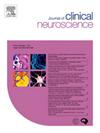The “make a flower bud and push at neck” technique: A safe and versatile technique for Woven EndoBridge treatment
IF 1.9
4区 医学
Q3 CLINICAL NEUROLOGY
引用次数: 0
Abstract
Purpose
The safety and efficacy of Woven EndoBridge (WEB) treatment has been proven. However, only a few standard techniques for safe and versatile WEB deployment have been described in the literature. In this study, we introduce the “make a flower bud and push at neck” technique to achieve safety and versatility during WEB treatment, referred to simply as the “flower bud” technique.
Methods
Consecutive patients who underwent WEB treatment between January 2021 and October 2023 were included. We dichotomized the techniques of WEB deployment into two: the “flower bud” technique and the ordinary unsheath technique. Patient demographics, clinical characteristics of the aneurysms, and treatment results were compared between the two techniques to evaluate the safety and versatility of the “flower bud” technique.
Results
Of 100 aneurysms, 96 were eligible in the study. The “flower bud” technique was applied in 79 aneurysms (82.3 %), and the ordinary unsheath technique was applied in 17 aneurysms (17.7 %). The aneurysm location significantly differed between both techniques. The degree of parent artery-aneurysm (PA) angle and the proportion of the PA angle ≥ 45° were significantly higher in the “flower bud” technique than in the ordinary unsheath technique (P = 0.024 and P = 0.009, respectively). Effective angiographical results and low morbidity/mortality rate were similar in the techniques, although intraoperative rupture was experienced in one aneurysm treated using the ordinary unsheath technique.
Conclusion
The “make a flower bud and push at neck” technique could be safer and more versatile in treating cerebral aneurysms by WEB compared to the ordinary unsheath technique.
“制作花蕾并推脖子”技术:编织内桥治疗的安全而通用的技术。
目的:证实了Woven EndoBridge (WEB)治疗的安全性和有效性。然而,文献中只描述了一些用于安全和通用WEB部署的标准技术。在这项研究中,我们介绍了“制作花蕾并在颈部推”技术,以实现WEB治疗过程中的安全性和通用性,简称“花蕾”技术。方法:纳入2021年1月至2023年10月期间连续接受WEB治疗的患者。我们将WEB部署技术分为两种:“花蕾”技术和普通的脱鞘技术。比较两种技术的患者人口统计、动脉瘤的临床特征和治疗结果,以评估“花苞”技术的安全性和通用性。结果:100个动脉瘤中,96个符合研究条件。“花苞”技术应用于动脉瘤79例(82.3%),普通无鞘技术应用于动脉瘤17例(17.7%)。动脉瘤的位置在两种技术之间有显著差异。“花苞”技术的载瘤动脉-动脉瘤(PA)夹角程度和PA夹角≥45°的比例均显著高于普通无鞘技术(P = 0.024和P = 0.009)。有效的血管造影结果和低发病率/死亡率在技术上是相似的,尽管在术中使用普通的无鞘技术治疗动脉瘤时经历了一次破裂。结论:“造花芽推颈”技术治疗脑动脉瘤比普通开鞘技术更安全、更通用。
本文章由计算机程序翻译,如有差异,请以英文原文为准。
求助全文
约1分钟内获得全文
求助全文
来源期刊

Journal of Clinical Neuroscience
医学-临床神经学
CiteScore
4.50
自引率
0.00%
发文量
402
审稿时长
40 days
期刊介绍:
This International journal, Journal of Clinical Neuroscience, publishes articles on clinical neurosurgery and neurology and the related neurosciences such as neuro-pathology, neuro-radiology, neuro-ophthalmology and neuro-physiology.
The journal has a broad International perspective, and emphasises the advances occurring in Asia, the Pacific Rim region, Europe and North America. The Journal acts as a focus for publication of major clinical and laboratory research, as well as publishing solicited manuscripts on specific subjects from experts, case reports and other information of interest to clinicians working in the clinical neurosciences.
 求助内容:
求助内容: 应助结果提醒方式:
应助结果提醒方式:


